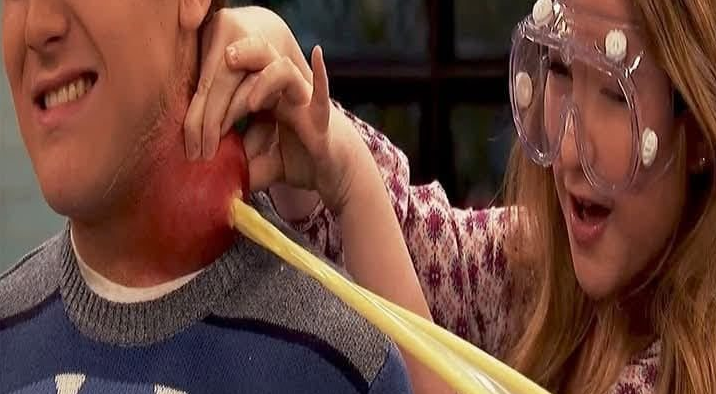https://youtu.be/Z4d5qvCSfjk?si=pB0kGTHDgBMd1KGY
Scroll down for the video 👇👇
Diagnosing a sebaceous cyst (also called an epidermoid or epidermal inclusion cyst, depending on its origin) usually involves a clinical evaluation by a healthcare provider. Here’s how it’s typically done:
🔍 1. Clinical History
The doctor may ask questions like:
-
When did you first notice the lump?
-
Has it changed in size?
-
Is it painful or tender?
-
Has it ever drained or oozed anything?
-
Any history of trauma to the area?
👩⚕️ 2. Physical Examination
The doctor will look for these typical features:
-
A small, round lump under the skin
-
Usually on the face, neck, back, or trunk
-
Mobile under the skin (not fixed to deeper tissue)
-
A central punctum (tiny opening or blackhead-like dot)
-
Non-tender unless infected
-
Feels firm or rubbery
🧪 3. Further Tests (if needed)
Usually not necessary unless the diagnosis is uncertain, the lump is unusual, or there’s concern for something else (like a tumor or abscess).
-
Ultrasound: Can help determine if the cyst is fluid-filled or solid.
-
MRI/CT: Rarely needed unless it’s deep, recurrent, or in a sensitive location.
-
Biopsy: If the diagnosis is unclear or there’s concern for malignancy (which is rare).
⚠️ Signs It Might Be Infected or Something Else
-
Redness, warmth, pus = infected cyst or abscess
-
Rapid growth, irregular shape, hard or fixed lump = possible tumor, needs more investigation
How do you diagnose a sebaceous cyst?
A diagnosis of a sebaceous cyst can be determined by a physical examination of the nodule by a dermatologist, family physician or other healthcare provider. There are occasions when additional testing is required to make a definitive diagnosis of a cyst, since it can sometimes be mistaken for a different type of skin tumor.
Common tests used to diagnosis a sebaceous cyst include:
Cat scan – This test is performed to rule out other abnormalities or cancer.
Ultrasound – This test is performed to establish the contents of the cyst and depth of inflammation.
Punch biopsy – This test is performed to identify the histology of the cyst.
Culture and Sensitivity – This exam is performed to determine the type of bacteria responsible for the infection and the best antibiotic to treat the infection.
What is a Cyst?
A cyst is a benign, encapsulated lesion that consists of a fluid sac which contains liquid, or semi-fluid material. It can vary in shape, size and location. The most common types of cysts are reviewed here.

🩺 1. Clinical Evaluation
History
-
Onset and Duration: Patients often report a slowly enlarging, painless lump.
-
Symptoms: Infection may present with pain, redness, or discharge.
-
Location: Commonly found on the scalp, face, neck, back, and trunk.
Physical Examination
-
Appearance: A firm, round, movable nodule with a central punctum (a small opening or blackhead-like dot).
-
Size: Ranges from 0.25 inches to over 2 inches in diameter.
-
Texture: The cyst may feel soft or rubbery.
-
Discharge: Expressing contents may reveal a foul-smelling, yellowish keratin material.Cleveland ClinicDermNet®
These clinical features are typically sufficient for diagnosis. In cases where the diagnosis is uncertain or malignancy is suspected, further investigations may be warranted.
🧪 2. Diagnostic Imaging
Ultrasound
-
Utility: High-frequency ultrasound is a non-invasive method to assess soft tissue masses.
-
Findings: Sebaceous cysts often appear as hypoechoic (dark) lesions with well-defined margins.
-
Advantages: Helps in evaluating the cyst’s size, depth, and relationship to surrounding structures.PMC
Ultrasound can be particularly useful when the clinical diagnosis is unclear or when planning surgical intervention.
🧬 3. Histopathological Examination
-
Indications: Typically reserved for atypical cases or when malignancy is suspected.
-
Procedure: Involves excising the cyst and examining the tissue under a microscope.
-
Findings: Histological analysis confirms the diagnosis and can rule out other conditions.
While routine histological examination is not always necessary, it may be considered in certain clinical scenarios.PMC
🧠 4. Differential Diagnosis
Several conditions can mimic the presentation of a sebaceous cyst:
-
Lipoma: A benign tumor of fatty tissue, typically soft and movable.
-
Ganglion Cyst: A fluid-filled sac arising from joints or tendons.
-
Abscess: A localized collection of pus due to infection.
-
Dermoid Cyst: A cystic teratoma containing various tissue types.
-
Skin Cancer: Malignant growths that may resemble cysts.
Differentiating between these conditions is crucial for appropriate management.
✅ Summary
The diagnosis of a sebaceous (epidermoid) cyst is primarily clinical, based on characteristic history and physical examination findings. Imaging studies like ultrasound can aid in assessment, and histopathological examination is reserved for atypical or suspicious cases. Understanding the differential diagnoses ensures accurate identification and management.
